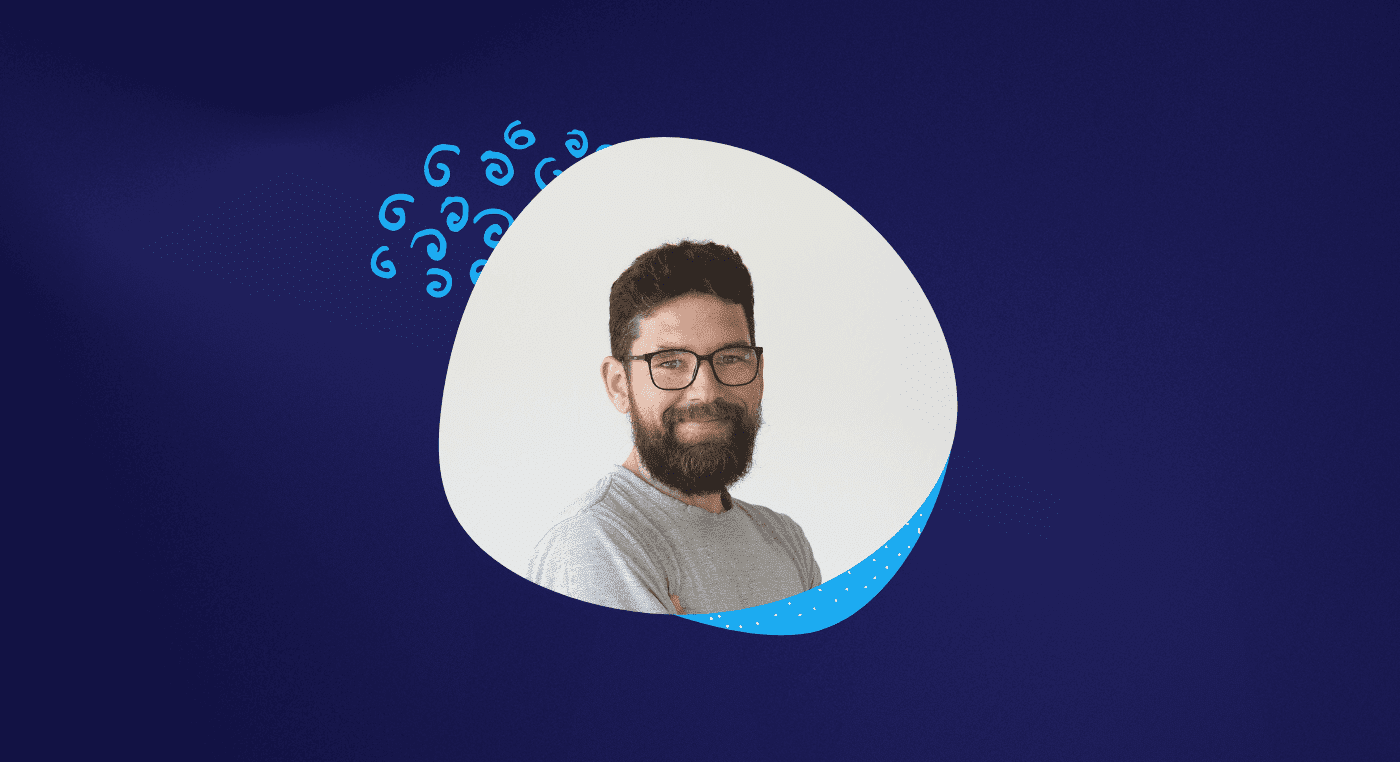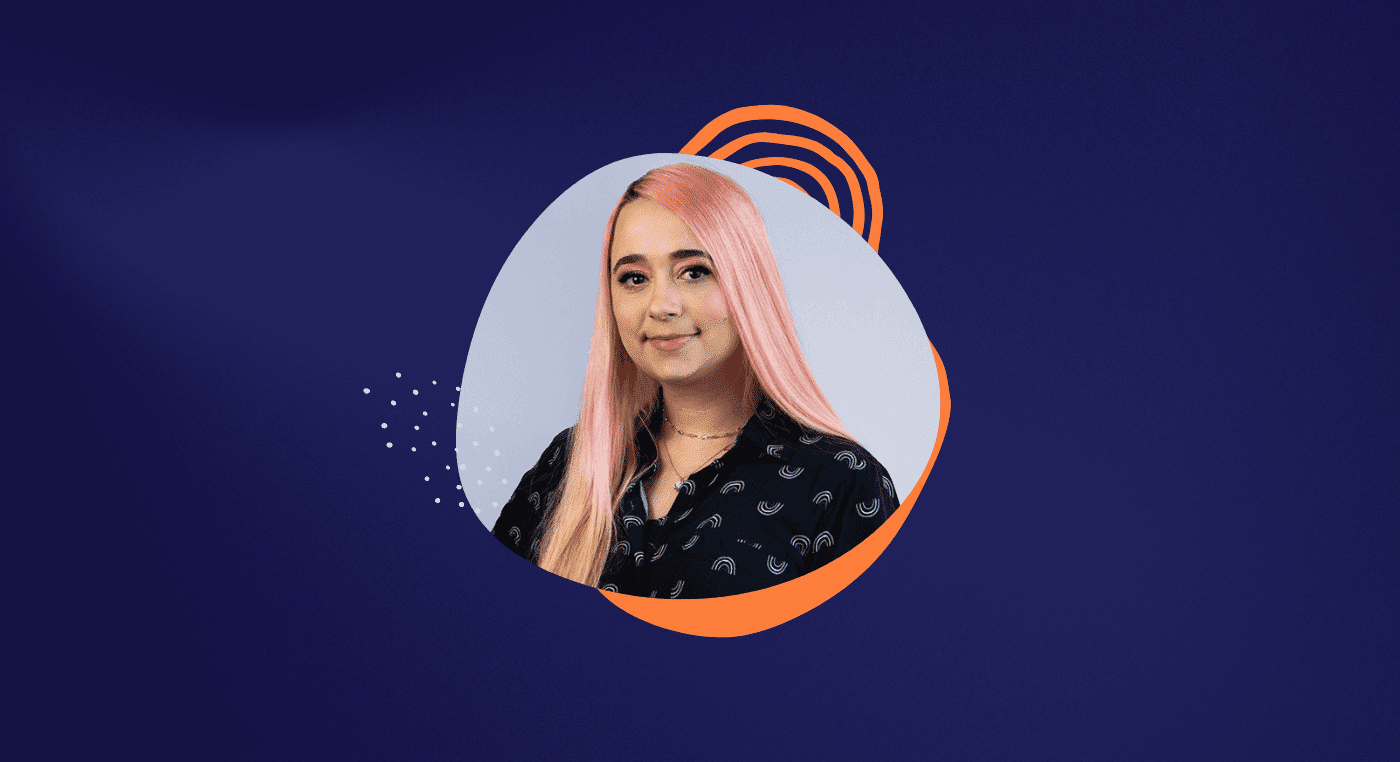Meet Vanessa Sousa, a Mastering Interface Design student who made the decision to switch to UX design from an advertising background.
Vanessa always dreamed of working in the creative industry, but after experiencing the day-to-day reality of the field, she realized that something was missing.
During her graduate studies in Digital Marketing and Design, Vanessa discovered her passion for UX design and decided to pursue it with determination.
With the goal of entering the UX/UI design job market within a year of study, Vanessa enrolled in the Aela program, where she quickly excelled.
After completing the MID level 2 program, which required 10 months of study, Vanessa's talent and hard work paid off when she was referred for a job through the Aela community.
Despite having no experience in UX design, Vanessa's portfolio, which included three projects she had developed during the MID program, helped her land a position on the UX design team at Indra, where she now works alongside four other talented MID colleagues.
In this interview, Vanessa shares her path to UX design and provides valuable advice for those who are also interested in pursuing a career in this field.
Learn from her experience and discover how to make the right choices to transition to UX design successfully.
Vanessa, please tell us a bit about your background
I majored in advertising in Belém. And while still an undergraduate, I was already working in creative advertising; I worked in marketing departments and advertising agencies.
Soon after graduation, I came to Rio de Janeiro (in 2016), where I pursued a graduate degree in Marketing and Digital Design. That's when I heard about UX Design.
From the start, what drew me to UX was the hands-on work I did in a graduate course. We learned about user testing and building "doodle frames," which I had never done before.
I enjoyed it so much that I realized UX was more promising than what I had been working on for a long time. This was during a time when mobile-oriented design was already prevalent, and I could see the potential in UX design.
Although I got really interested, I kept on working in agencies, as an Art Director, doing a little bit of everything, from print, visual identity, banners, email marketing, etc.
Reading tip: Student Testimonials: What Do They Say About MID Bootcamp?
How was your transition to UX Design?
I discovered Aela in 2018 and quickly began the MID program in August of that year. From the start, I set a clear goal for myself: to enter the UX/UI design job market within one year of starting my studies.
While still in level 2 of the course, I began preparing my portfolio with projects from both levels 1 and 2.
After that, I began applying for several jobs. I even applied to a recruitment process for a position in another country because it has always been my dream to live abroad.
However, I soon discovered that most international job postings required experience I didn't yet have. So I kept my focus on Brazil and applied for UX/UI design jobs locally.
It was then that I saw an opportunity in the students' community of Aela. Diogo, a fellow MID student, posted the opening, and I decided to apply.
I had an interview with him on a Friday and sent the tests I had done over the weekend. And on Tuesday of the following week, I already received the result that I had passed. Everything happened very fast.
Today I work as a UX Designer at Indra, along with four other MID students.
What are the differences between applying for jobs in Advertising and UX Design?
The main difference is the way they analyze the portfolio. It's important that everything is well organized and that you explain the whole project process.
You are not supposed to present only the final result. Recruiters will ask a lot about the work you did.
I was always honest, making it clear that these were academic projects that I developed during the first levels of the MID program.
The interviews are okay. There are not that many differences, but this different look at the portfolio is what changes. That's why I didn't have that much difficulty in the interviews I did here in Brazil.
However, in the interviews for positions outside Brazil, I struggled with English because I wasn't prepared.
Reading tip: User Interview: Keys to Gather Insightful Information
Did you have problems with anxiety about pivoting to UX Design?
At first, I was eager to jump into a new career, but I soon realized I needed a deeper understanding of the field.
And in MID level 2, you get to know everything, the design process from start to finish. So you have to be patient and control your anxiety.
I tried applying for jobs at level 1 already, but I felt it wasn't the time yet. So I put more effort into it, relaxed a bit, and decided to do the whole portfolio in English, only when I finished level 2.
So, with this portfolio that I put together during the first levels of the MID, I applied for UX jobs. And I got hired!

How did you organize your time to study a new field?
It was not easy, because I was working at the same time. I had to give up some things to have time to study.
I left social media aside a little because they take up so much time that you don't even notice.
And how is your new routine today as a UX Designer?
It's very different and challenging compared to the daily routine at the agencies.
Today I am working for one of our clients in a consulting team with 4 UX Designers who also came from the Aela community. They all went through this phase of moving from advertising to UX. So they know my pains and help me a lot.
It's different, and it's good: exactly what I wanted.
Also, I no longer wanted that routine of only delivering, at that fast pace of production, without actually following up on what happened to those pieces.
Very different from before, there were days that I didn't even turn on the computer: I went to meetings, talked directly to clients, and drew screens.
Another thing that is also different is the timing to plan, research and analyze. It's more than just producing pieces.
Reading tip: Benchmarking: How To Conduct One?
In your opinion, why do UX Designers go beyond producing pieces?
When you have more time to plan, the delivery is more assertive.
There are several small deliveries in UX, but they are more accurate. You need to consider the user and the business to be able to meet the needs of both.
Therefore, you need more time to focus, research, and plan each and every aspect.
If you could go back in time, what would you say to Vanessa prior to pivoting to UX Design?
I don't regret anything. And everything I experienced before helped me see things the way I see them today.
And having spent years in agencies made me learn things and made me see that I didn't like working in the creative field. During my advertising course, I thought I wanted to work with that.
I realized the right way to go when I got to where I "wanted" to be.
What is your advice to those who want to transition to UX Design?
Study hard!
Whenever possible. So read books, and articles, seek more knowledge, and most importantly, do everything to the best of your ability, including the assignments during the MID if you are taking the program.
The key is to believe that you can do it. Also, set a goal and study. That's what I did and it worked!
The course provides excellent classes and feedback. So it's very difficult not to have a good result.
So believe in yourself and do your best.
What do you want in the future in UX Design?
In the short term, I want to keep learning a lot, including coding and development, because I deal a lot with people in this field.
In the long run, I plan to work abroad and get to know other places and cultures. This experience in Brazil is crucial and will give me the foundation to work in other companies abroad.
Ultimately, I want to be able to change someone's life for the better with these projects that I participate in.







